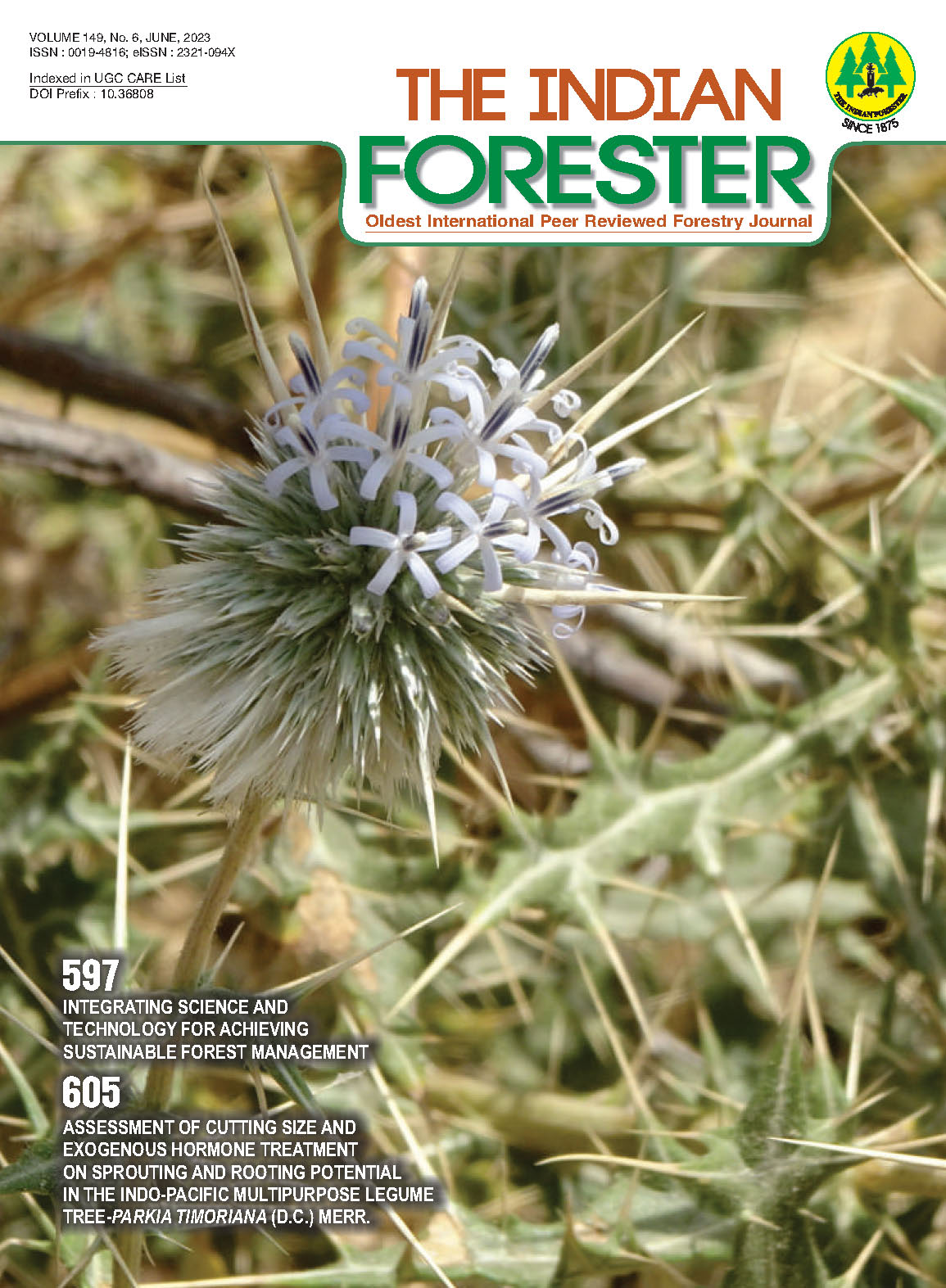First Report of Megafossils (Glossopteris Flora) From The Simlong Open Cast Mine, Rajmahal Basin, Jharkhand, India- Evidence for Coal Forming Vegetation in the Area
DOI:
https://doi.org/10.36808/if/2023/v149i6/158486Keywords:
Glossopteris, Barakar Formation, Rajmahal Basin, Assemblage.Abstract
The present investigation deals with the first report of the Glossopteris flora from the Barakar Formation of Simlong Open Cast Mine, Rajmahal Basin, Jharkhand, India. The assemblage is represented by pteridophytes and gymnosperms. Pteridophytes comprise Equisetalean axes whereas, gymnosperms include impressions of members of order Glossopteridales namely Glossopteri gigas, G. indica and Vertebraria indica. The present study is significant in widening the knowledge of the Glossopteris flora especially from the Simlong Open Cast Mine, Rajmahal Basin where the floral information is not known to now.
References
Ball, V. (1877). On the geology of Mahanadi Basin and its vicinity. Record of Geological Society of India, 10: 167-185.
Brongniart, A. (1828). Histoire des vegetaux fossiles ou recherches botaniques sur les vegetaux renfermes dans les diverses couches du globe. Paris, 1, 136 pp.
Chandra, S. and Surange, K.R. (1979). Revision of the Indian species Glossopteris Monograph no. 2. Birbal Sahni Institute of Palaeobotany, Lucknow.
Feistmantel, O. (1876). Notes on the age of some fossil floras in India—VII. Flora of the Jabalpur Group in South Rewah, near Jabalpur, and in the Satpura Basin. Records of the Geological Survey of India, 9: 125–129.
Feistmantel, O. (1880). The fossil flora of Gondwana System (Lower Gondwana). II. The flora of Damuda–Panchet Division. Memoirs of Geological Survey of India. Palaeotonlogia Indica, 12(2), 77 pp.
Feistmantel, O. (1882). The fossil flora of the Gondwana System in India—1. The fossil flora of the South Rewah Gondwana Basin. Memoirs of the Geological Survey of India, Palaeontologia Indica, 12, 3(4), 52 pp.
Feistmantel, O. (1877). Notes on fossil floras in India XI. Note on plant fossils from Barakar District (Barakar Group). Records of Geological Survey of India, 10: 73–74.
Fox, C.S. (1931). The Lower Gondwana System and related formations. Records of Geological Survey of India, 58, 241 pp.
Joshi, A. (2018). In situ occurrence of Vertebraria indica from the Rajmahal Open Cast Mine, Rajmahal Basin, India: an evidence for coal forming vegetation. Journal of Terrestrial and Marine Research, 2(1): 12-16.
Joshi, A. (2020). Dispersed Permian megaspores from Rajmahal Basin, Jharkhand. Species, 21: 281-285.
Joshi, A., Tewari R., Agnihotri D., Pillai S.S.K. and Jain R.K. (2015). Occurrence of Vertebraria indica (Unger) Feistmantel, 1877 – an evidence for coal-forming vegetation in Kothagudem area, Godavari Graben, Telangana. Current Science, 108 (3): 330-333.
Krishnan, M.S. (1982). Geology of India and Burma (6th edition), Delhi, CBS publishers.
Lawrence, G.H.M. (1955). An Introduction to plant Taxonomy. The Macmillan Company New York, 179 pp.
Maheshwari, H.K. and Bajpai, U. (1992). Ginkgophyte leaves from the Permian Gondwana of Rajmahal Basin. Palaeontographica, 224(B): 131–149.
Maheshwari, H.K. and Prakash, G. (1965). Studies in the Glossopteris flora of India 21. Plant megafossils from the Lower Gondwana exposures along Bansloi River in Rajmahal hills, Bihar. Palaeobotanist, 13: 115–128.
McCoy, F. (1847). On the fossil Botany and Zoology of rocks associated with the coal of Australia. Annual Magazine of Natural History Museum, 20, 298 pp.
Medlicott, H.B. (1872). Notes on exploration for coal in the northern region of the Satpura Basin. Records of Geological Survey of India, 5: 109-128.
Melville, R. (1969). Leaf venation patterns and the origin of the angiosperms. Nature, 224: 121–125.
Mukhopadhyay, G., Mukhopadhyay, S.K., Roychowdhury, M. and Parui, P.K. (2010). Stratigraphic correlation between different Gondwana basins of India. Journal of Geological Society of India, 76(3): 251-266.
Oldham, R.D. (1893). A manual of the geology of India. Stratigraphical and structural geology. 2nd Edition. Geological Survey office, Kolkata.
Pant, D.D. and Singh, K.B. (1971). Cuticular structure of some Indian Lower Gondwana species of Glossopteris Brongniart Part III. Palaeontographica, 135(B): 1–40.
Prasad, B., Shukla, V.D. and Maithy, P.K. (1987). Megafossils of the Lower Gondwana succession in Pachhwara Coalfield, Bihar. Gondwana Geological Magazine, 2: 17–29.
Royle, J. F. (1833-1839). Illustrations of the Botany and other Branches of Natural History of the Himalayan Mountains, etc., London.
Schimper, W.P. (1869). Traite´ de Pale´ontologie ve´ge´tale—1, J. b. Bailliere et Fils, Paris, 738 pp.
Singh, K. J. and Chandra, S. (1995). In situ preserved Vertebraria axes in Ib river coalfield, India. Current Science, 69: 228–229.
Singh, K.J., Saxena, A. and Goswami, S. (2016). In situ occurrence of Vertebraria roots in the Raniganj Formation of Singrauli Coalfield and its palaeoecological significance. Current Science, 110 (3): 299-301.
Srivastava, A. K. (1995). Nature and preservation of Vertebraria axes in the Lower Gondwana beds of India. Acta Palaeobotanica, 35: 189–193.
Tewari, R. (2007). The Glossopteris flora from the Kamptee Coalfield, Wardha Basin, Maharashtra, India. Palaeontographica, 277 (B): 43–64.
Tewari, R. (2008). The genus Glossopteris Brongniart from the Kamthi Formation of Camp IV area, Wardha Valley Coalfield, Wardha Basin, Maharashtra, India. Journal of Palaeontological Society of India, 53: 19–30.
Tewari, R. and Srivastava, A.K. (2000). Plant fossils assemblage from the Talchir Formation, Auranga Coalfield, Bihar, India.
Palaeobotanist, 49: 23–30.
Tewari, R., Joshi, A. and Agnihotri, D. (2017). The Glossopteris flora of Manuguru Area, Godavari Graben, Telangana, India. Palaeobotanist, 66 (1): 17-36.
Vredenburg, E. (1910). ‘A summary of the geology of India, 2nd Edn.’ (Calcutta).
Wadia, D.N. (1957). ‘Geology of India, 3rd Edn, Revised.’(MacMillan: London).
Downloads
Downloads
Additional Files
Published
How to Cite
Issue
Section
License
Unless otherwise stated, copyright or similar rights in all materials presented on the site, including graphical images, are owned by Indian Forester.





